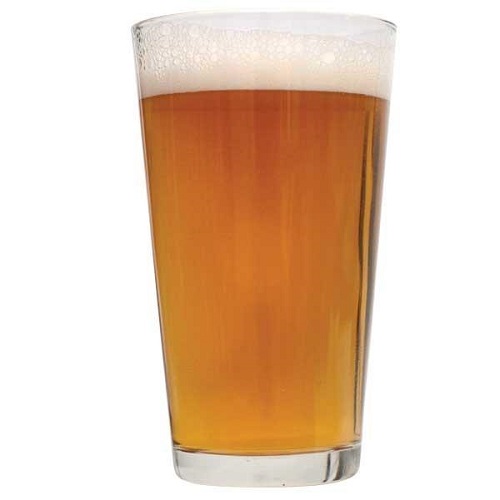For many years in the United States, lagers and pilsners dominated the market with names like Budweiser, Miller, and Coors becoming basically synonymous with beer. But with the rise of the craft beer movement, different styles have started to gain more acceptance such as ales, porters, stouts, and wheat beers. (You can see a quick rundown of beer styles here.) Among these other variations, pale ales have become particularly popular and currently hold a notable share among the craft brews currently produced.
Pale ale is characterized by its pale, golden color, and it typically has a hop-forward flavor profile. It is most often brewed using pale malted barley and features a moderate to high level of hop bitterness, and it typically contains notes of citrus, pine, and floral aromas. That will vary with the different varieties, though, as each has its own unique characteristics. Following are several common types of pale ale:
 American Pale Ale: This style of pale ale originated in the United States and is known for its aggressive hop character. It typically features a medium body, moderate to high hop bitterness, and a citrusy, piney flavor profile. Examples: Sierra Nevada Pale Ale, Deschutes Mirror Pond Pale Ale, Dogfish Head Shelter Pale Ale.
American Pale Ale: This style of pale ale originated in the United States and is known for its aggressive hop character. It typically features a medium body, moderate to high hop bitterness, and a citrusy, piney flavor profile. Examples: Sierra Nevada Pale Ale, Deschutes Mirror Pond Pale Ale, Dogfish Head Shelter Pale Ale.
English Pale Ale: This style of pale ale originated in England as the title indicates and is known for its balanced hop and malt character. It typically features a medium body, moderate hop bitterness, and a biscuity, caramel flavor profile. Examples: Bass Pale Ale, Boddington Pub Ale, Sam Adams Boston Ale.
Belgian Pale Ale: This style of pale ale is known for its fruity and spicy character. It typically features a medium body, low to moderate hop bitterness, and notes of fruit, spice, and yeast. Examples: Orval Trappist Ale, Leffe Blonde, Ommegang BPA.
 India Pale Ale (IPA): This style of pale ale originated in England and is known for its high hop bitterness and strong, complex flavors. It typically features a medium to full body, high hop bitterness, and a citrusy, piney flavor profile. Examples: Lagunitas IPA, Stone IPA, Dogfish Head 60 Minute IPA.
India Pale Ale (IPA): This style of pale ale originated in England and is known for its high hop bitterness and strong, complex flavors. It typically features a medium to full body, high hop bitterness, and a citrusy, piney flavor profile. Examples: Lagunitas IPA, Stone IPA, Dogfish Head 60 Minute IPA.
New England IPA: This style of pale ale, also known as Hazy IPA, originated in the Northeastern United States and is known for its hazy appearance and juicy, tropical fruit flavors. It typically features a medium body, low to moderate hop bitterness, and a creamy mouthfeel. Examples: Voodoo Ranger Juicy Haze IPA, Avery Brewing Nomadic Dreamer, Sam Adams Wicked Hazy Juicy New England IPA.
West Coast IPA: This style originated on the West Coast of the United States, particularly in California. It is known for its bold and hoppy flavors, high bitterness, malty backbone, and it typically has a higher alcohol content. Examples: Green Coast Brewing West Coast IPA, Stone Brewing Ruination IPA, Weathered Souls West Coast IPA.
 Session Pale Ale: This style of pale ale is known for its low alcohol content and easy-drinking character. It typically features a light to medium body, low hop bitterness, and a crisp, refreshing finish. These are good for beginners to pale ales or those who do not like the bolder IPAs. Examples: Founder’s Session All Day IPA, Full Sail Session Hazy IPA, Deep Ellum Easy Peasy IPA.
Session Pale Ale: This style of pale ale is known for its low alcohol content and easy-drinking character. It typically features a light to medium body, low hop bitterness, and a crisp, refreshing finish. These are good for beginners to pale ales or those who do not like the bolder IPAs. Examples: Founder’s Session All Day IPA, Full Sail Session Hazy IPA, Deep Ellum Easy Peasy IPA.
There are other variations of pale ale out there as well, and the many craft brewers are coming up with their own distinct brews all the time. Feel free to share some of the pale ales you have enjoyed in the comments below.

+ There are no comments
Add yours